Humanity, it goes without saying, is struggling through some difficult times. Certain cultural, political and economic disagreements are raging fiercer than ever, making global headlines on a daily basis. As bad as things look, however, this narrative of discord is often punctuated by messages of hope, collaboration and collective advancement. One of these beacons of light is CERN, the European Laboratory for Particle Physics.
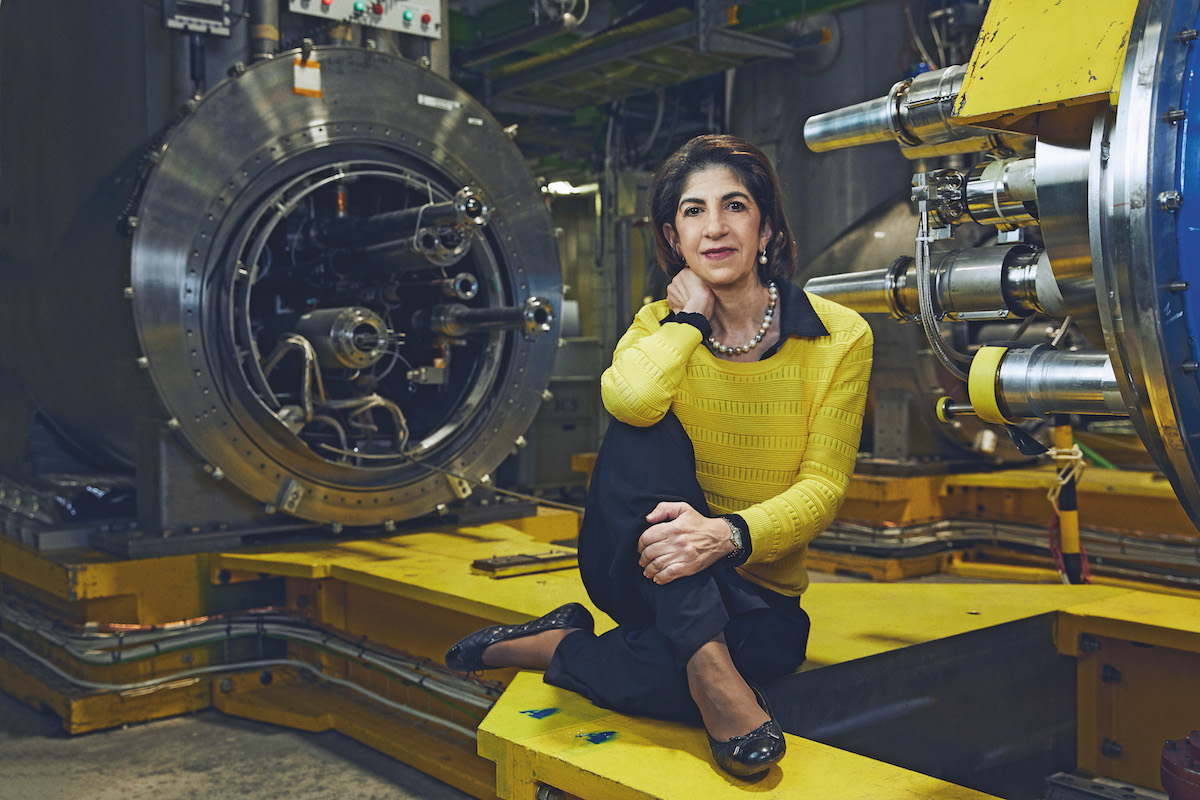
“The engine that drives us every day at CERN is enthusiasm and passion for what we are doing,” says Director-General Fabiola Gianotti. “It’s not only physics research. It’s the commitment to promoting the values of science, education and collaboration across the borders that are not so fashionable anymore.”
Fabiola is not just an influential figure in European science, nor even just in international science; her accolades and recognition reach far beyond the boundaries of her chosen discipline.
As leader of CERN’s ATLAS project between 2009 and 2013, overseeing 3,000 scientists, she was included in “top 100” lists of internationally influential women by publications like The Guardian and Forbes.
In 2012, the year that the world watched Fabiola speak at CERN on the discovery of the hitherto theoretical Higgs boson, she was ranked fifth in Time’s Personality of the Year.
As such a notable figure within CERN, and in science worldwide, it was little surprise that in 2016 she was elected to a five-year term as Director-General. The 16th to serve since CERN was founded in 1954, Fabiola is also the first female Director-General, a notable achievement in a field still dominated by men – even within STEM, physics suffers from a vast gender gap.
It makes Fabiola’s achievements all the more impressive, but given her childhood interest in science (the influence of her father, a geologist) and her admiration of pivotal scientist Marie Curie, perhaps it was only inevitable. “It’s rewarding for a human being to contribute; to advance the progress of knowledge,” says Fabiola.
“It’s rewarding for a human being to contribute; to advance the progress of knowledge.”
“At CERN, we all share this passion, this special yet modest awareness, that in our small corner, we are doing something good for humanity in terms of knowledge and in terms of collaboration across boundaries. Everyone at CERN buys into this vision.
“At CERN … we all share this passion, this special yet modest awareness, that in our small corner, we are doing something good for humanity.”
Not only the scientific personnel, not only the physicists and the engineers but the technicians and the administration – everyone. Each activity at CERN feels integral to what we are doing.
You can feel this sense of ownership of what we do in the lab and a pride in being part of this adventure, across the whole spectrum of employees.”
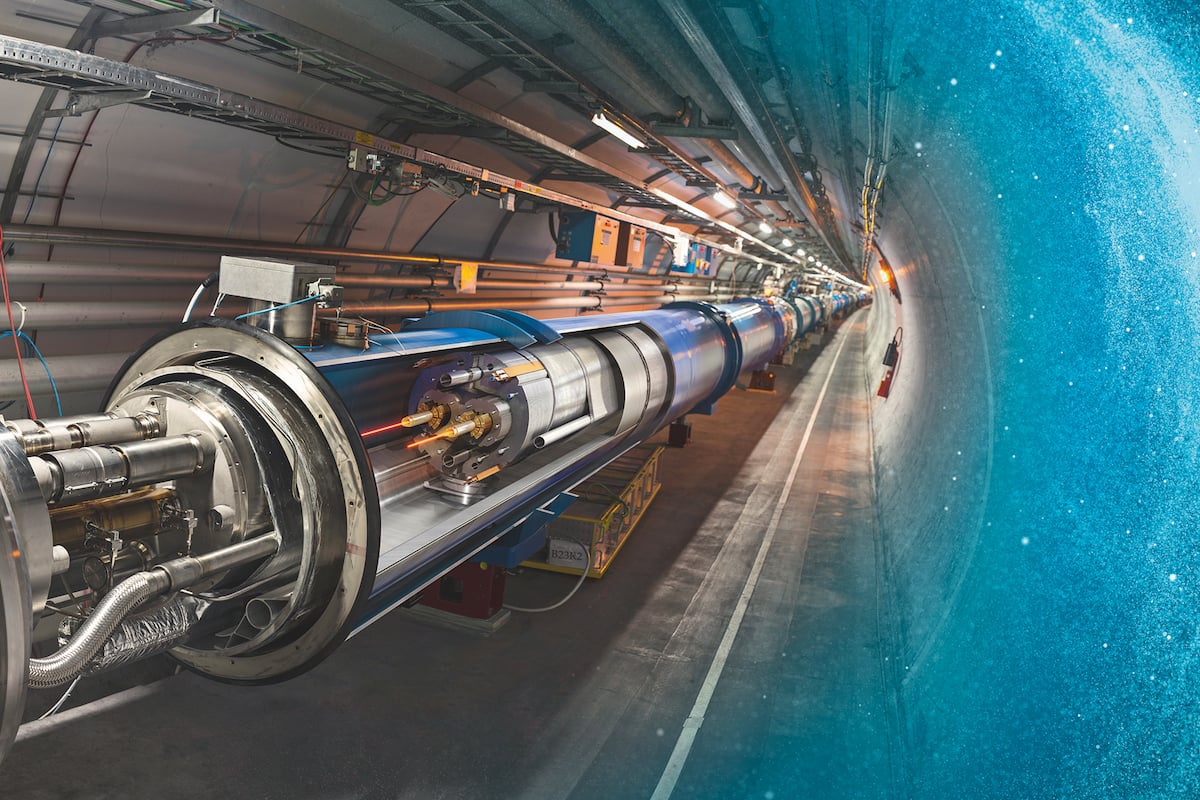
A driver of innovation
When she took on her current role, Fabiola intended to continue the work carried out by her predecessor, those before him and, indeed, the organisation as a whole. This vision entailed the promotion of CERN’s values as well as making strides in humanity’s understanding of particle physics.
The mission of the organisation itself is “to uncover what the universe is made of and how it works”, which it does through the provision of state-of-the-art particle accelerator facilities, such as the Large Hadron Collider (LHC), and through carrying out advanced research.
The Large Hadron Collider
The LHC isn’t CERN’s only piece of equipment, but it’s certainly the largest and best-known. Consisting of a 27-kilometre ring of superconducting magnets, it’s the largest and most powerful particle accelerator in the world. It also crosses between the French-Swiss border, a testament to CERN’s role as a pan-European research organisation.
The process involves particles being flung at each other at close to the speed of light. Physicists expect that observing these collisions will offer revelations and answer long-held questions regarding the basic laws of the universe. In 2012, for example, scientists confirmed an observation that suggested the Higgs boson did indeed exist.
At the same time, Fabiola keeps in mind CERN’s enduring status as a driver of innovation, through the development of advanced technology and through encouraging adjacent industries to innovate, thus providing benefits to wider society.
“Accelerators, detectors and powerful computing infrastructure require the development of technologies across several domains, from cryogenics to electronics, superconducting magnets and the storage and processing of big data,” Fabiola explains.
“These developments usually go beyond what society and industry have already achieved. With the current LHC, we’ve had to develop new technologies, new ideas and new concepts that were unknown or not yet mastered by industry when we started talking about them.”
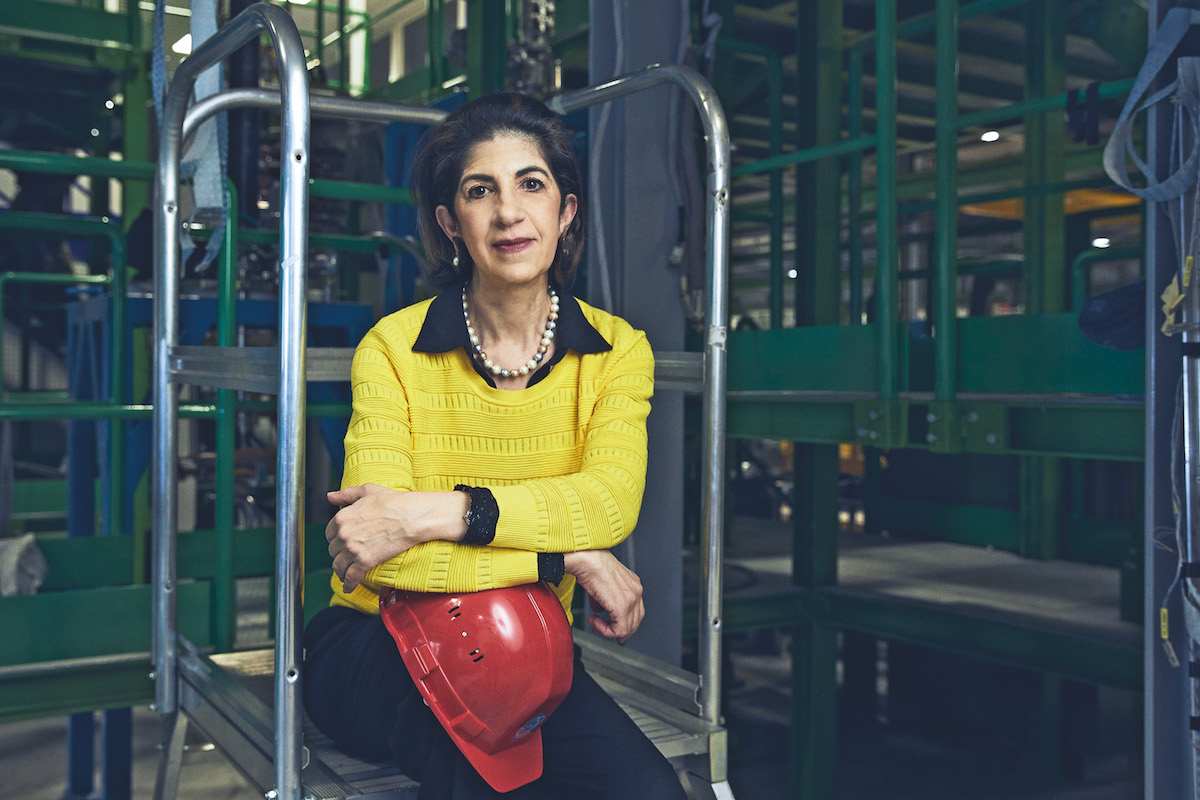
Fabiola believes the nature of CERN’s work, and the organisation itself, gives it greater freedom to push for these kinds of changes. While CERN’s work has produced countless practical applications for society, this isn’t the true purpose of the lab. Its motivation is to pursue knowledge for knowledge’s sake, rather than focus on what’s profitable or useful.
“History shows that often disruptive breakthroughs that change our life come from fundamental research,” she says. “This is because fundamental research is driven by curiosity. It has no restraints, such as having to deliver a given product within a given timescale, so there’s freedom to think out of the box.”
Fabiola considers quantum mechanics to be a prime example of this mentality. The field was first conceived of in the early 20th century by scientists such as Einstein, Schrödinger and Heisenberg. It focused on the universe at its smallest possible levels, examining particles well below the level of the atom.
Today, it has applications across several different scientific disciplines and has contributed to technologies including MRI, electron microscopy and microprocessors. But in the early years of the field, such uses were yet to be dreamt of.
“When it was developed, quantum mechanics was considered to be useless knowledge because it was so far removed from any practical application,” says Fabiola. “And yet, without quantum mechanics, modern electronics would not exist, so what would be the conditions of society today? An important thing to notice is that the great physicists that developed quantum mechanics weren’t trying to invent new electronics, they were just trying to understand how the universe works.”
Even Heinrich Hertz, the physicist who conclusively proved the existence of radio waves, had no idea what
to make of his discovery, only that it contributed to our understanding of physics.
Though the revelation would lead to the use of radio in communications only a few decades later, Hertz said at the time that the practical use of his discovery amounted to, “Nothing, I guess.”
With radio now underpinning telecommunications and wireless technology, it’s proof of Fabiola’s assertion that research for its own sake is a critical process for humanity and therefore the work CERN does is indispensable.
There are indeed examples of CERN’s own contributions to society. For example, the industrial alloy niobium-titanium, 1,200 tonnes of which are used in the LHC’s superconducting magnets, hadn’t yet been widely adopted at the time CERN’s designs called for it.
CERN therefore had to drive industrial innovation to the point where the organisation’s needs could be accommodated. But the most revolutionary of CERN’s innovations is the World Wide Web, devised by Sir Tim Berners-Lee in 1989 at CERN.
“The development of the Web, for me, is the model, the template of how CERN can impact society,” says Fabiola. “When it was developed, it was just a tool to improve communication among us, the scientists here in the laboratory. That was the pioneering idea.
Nobody could predict at that time the phenomenal impact it could have on society. It is the template of what fundamental research can do for society.”
“(The World Wide Web) is the template of what fundamental research can do for society.”
Organisations like CERN therefore couldn’t be further removed from any image of esoteric, ivory-tower academics, working on problems that have no bearing on humanity.
When Fabiola says she and her team are driven by CERN’s ability to improve the lives of humanity, it’s more than just contributing to our collective pool of knowledge; it’s enabling humanity to better itself through future
application of this knowledge.
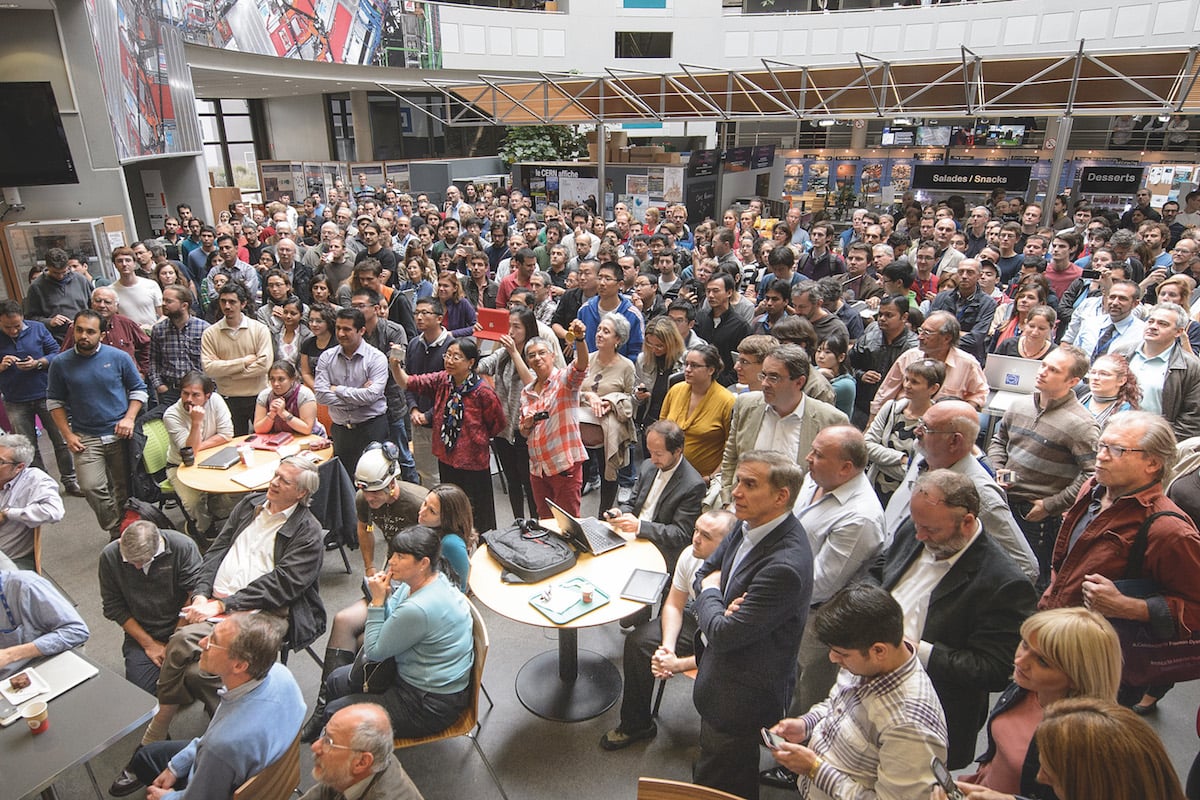
Collaboration for Mutual benefit
CERN’s industry partnerships are also a necessity due to the potential for advancing European physics research. By improving the capabilities of its partners, the research organisation ensures that the research field collectively has access to more advanced equipment.
CERN challenges its partners to achieve industry evolution by building strong relationships and maintaining operational excellence between all parties – suppliers, customers and employees.
“If we need to build cutting-edge superconducting magnets, we develop partnerships with suitable industries,” Fabiola explains. “We work together to build prototypes, we understand together what the challenges are and how to solve them.
Once we’ve understood that vital step of the process, then the work is transferred to industry which carries out the large-scale production of the final magnets. But it’s a partnership that in most cases has to do with learning, growing and developing together.”
CERN has far-reaching relationships across numerous industries, drawing in suppliers and partners from across Europe. For example, BIOS IT is a supplier of servers at CERN.
The delicate, specialist equipment that makes CERN’s experiments possible is supplied by companies such as Hamamatsu Photonics (optical sensors, cameras, lasers and so on), Pfeiffer Vacuum (advanced vacuum technology) and Ram Power S.r.l. (cooling systems), among others.
In terms of facility expansion, Implenia France and Marti Tunnel AG are involved in the civil engineering of new caverns, galleries and buildings needed for upgrades to the LHC.
Each of these companies are based in diverse regions of the world but the goal of mutual development remains unchanged between them, which is why Fabiola and her team work to maintain longstanding partnerships between industry bodies and CERN. That said, CERN is also willing to engage with smaller, newer companies.
“There are newcomers on the market that can offer similar products at competitive prices,” says Fabiola. “We also engage with them because our procurements always go through an open call for tender.”
Other CERN partnerships have a less supplier-focused nature. There are, for example, numerous programs designed to spread knowledge. EIROforum is an organisation that brings together CERN and several other European research organisations to amplify their abilities and better achieve their respective goals.
Meanwhile, CERN has implemented a group intended to formalise the exchange of knowledge with industry. The aptly-named Knowledge Transfer Group encourages collaboration with large corporations, SMEs and start-ups.
It means entrepreneurs have unfettered access to some of the most advanced technology in the world, as well as access to the knowledge necessary for using said technology.

Working across borders
In 2018, CERN completed work on an 18-month-long project. It wasn’t any kind of scientific discovery, it was the redevelopment of the Esplanade des Particules – the urban area outside CERN headquarters in Geneva. Jointly conceived with the local government, it was intended to create a more welcoming site for visitors to Europe’s premier research organisation.
In a press release, Fabiola said, “As with the Globe of Science and Innovation [a building donated to CERN by the Swiss Confederation], which symbolises our desire to welcome the general public, the Esplanade des Particules will further demonstrate CERN’s openness to the city of Geneva and to the world”.
One of the most striking features of the Esplanade is the swathe of national flags, representing the many member states within CERN. Arrayed along the entry road, these member flags indicate the organisation’s commitment to cross-border collaboration and a mission that transcends regional differences.
“It’s an invitation to share our values – CERN works together with the Member States and other countries across the world to do something useful for humanity,” Fabiola says.
In fact, Fabiola believes that CERN’s work, and science as a whole, can contribute to reducing inequalities by committing to noble values like education, development, cooperation and collective self-improvement. She believes these ideals are part of what allows CERN to fulfil its important mission, and they’re expected from everyone within CERN and everyone connected to it.
“CERN has values of collaboration, diversity, respect,” she says. “When we talk about diversity, it’s in all its facets: ethnicity, gender, culture. We expect everyone – employees, associates, partners – to respect these values. They are the foundations of our relationships.”
But the importance of the organisation’s diversity goes beyond internal cohesion. “CERN, by its founding convention, was put in place to not only foster scientific excellence in research but also to promote peaceful collaboration,” says Fabiola. “When CERN was founded in 1954, many European countries were still shaken by the disasters of World War II.
Since then, CERN has responded by becoming a world laboratory, welcoming more than 17,000 scientists from all over the world and more than 110 different nationalities.
“There are people here who work together regardless of their origin and the political status in their countries. Some of these scientists come from countries in conflict yet they work together here, animated by the same passion for knowledge and scientific research. In that sense, CERN, and science in general, can play a key role in connecting people in a fractured world.”
Though there remain European nations not part of the organisation, CERN continues to welcome new additions each year. The year 2018 saw Serbia, Croatia and Lithuania all progress towards being member or associate member states. Today, there are 22 full members of CERN mostly from within Europe, but other collaborative nations come from further afield, with Turkey, India and Pakistan all having earned the status of associate member.
In fact, there are more than 50 non-member nations who are involved in CERN’s programs, or have collaboration with CERN, from Asia–Pacific, the Middle East, Africa, South America and North America. These far-reaching scientific contacts prove that CERN has achieved, and continues to achieve, one of the organisation’s broad goals – the restoration of good relations between previously bitter enemies in post-war Europe and beyond.
In fact, CERN was one of the few channels to remain undivided by the Cold War and facilitated the first contact between Israeli and German scientists after World War II. To this day, the organisation remains a cornerstone of European and world diplomacy, having been an observer in the UN General Assembly since 2012. Likewise, the establishment of SESAME, a research facility in the Middle East, gives truth to Fabiola’s belief that “science for peace” is in the DNA of CERN.
“A passion for knowledge and the aspiration to learn and know more, understand more – these are values that are shared by all humanity.”
“Science is universal as it is based on facts and the laws of nature are the same everywhere on earth,” she says. “It is also unifying as the quest for knowledge and the aspiration to learn and know more are values that are shared by all humanity.”
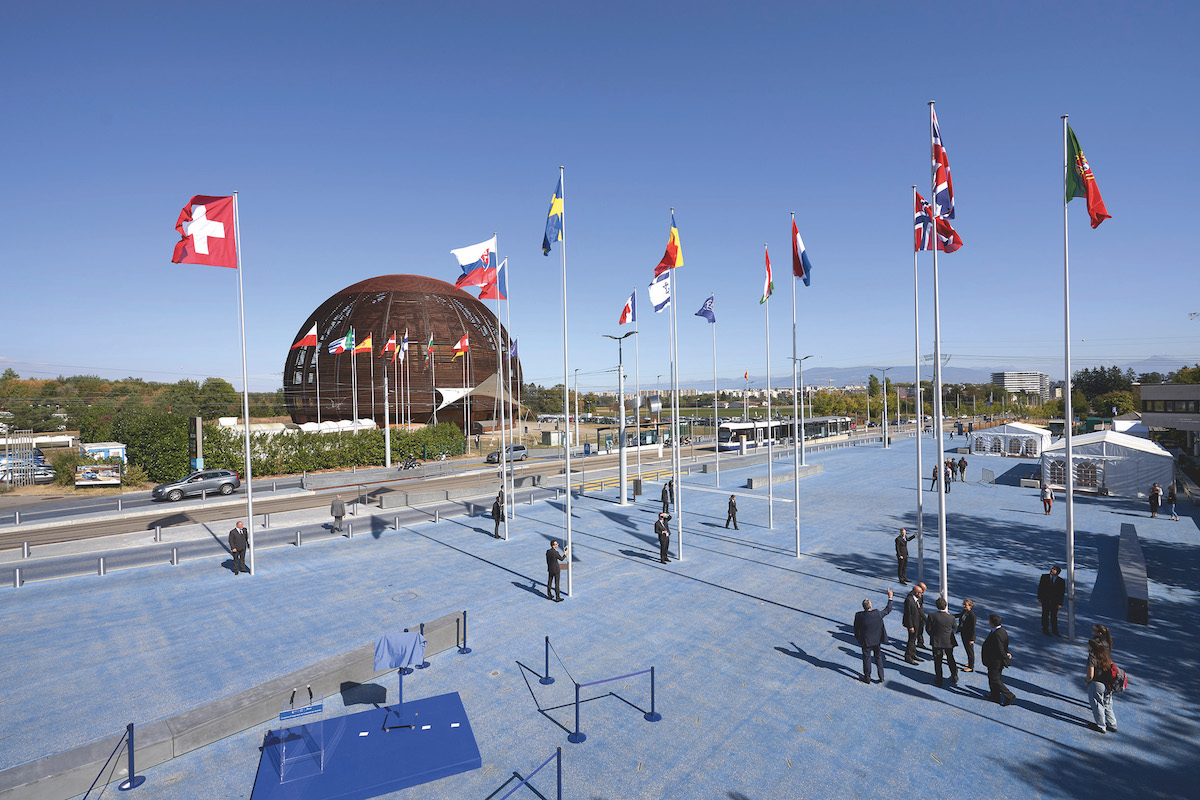
Talking science
As Fabiola says, values of science, knowledge and research may have declined in the face of certain political movements worldwide. In response, CERN’s efforts to communicate the importance of science have only strengthened.
Its stated aims, besides uncovering the secrets of the universe, include being a “strong voice for science”, encouraging new generations to take up science and engineering roles, and an effort to “inspire and nurture scientific awareness” across society.
“Training and education are among our main goals,” says Fabiola. “It doesn’t just include the training of
tomorrow’s scientists, such as people working in our fields (particle physics, accelerators, detectors, computing). We also have many initiatives targeting the public.
“We are working on a project, called Science Gateway, a new learning centre at CERN to promote education and outreach for the general public of all ages. It will feature temporary and permanent exhibitions, as well as hands-on experiments for the kids’ classroom. We hope it will stimulate and inspire younger people, from five-year-olds to high-school students and beyond.”
The Science Gateway centre will cover a space of 7,000 square metres and is intended to clearly communicate the scientific research and insights being produced by CERN and its impact on society. As well as explaining CERN’s current work, it also records the history of scientific discoveries – the journey of the human endeavour – to convey the enormity of the mission which CERN fits into.
To further convey the importance of international collaboration and to strengthen ties with other CERN member states, the Science Gateway will partner with museums and other educational establishments across Europe.
This new education centre, along with Esplanade des Particules, promises to welcome new visitors from the public en masse. In 2017, 136,000 visitors came to CERN, representing a substantial increase over previous years. Meanwhile, travelling exhibits came to the public in cities such as Istanbul, Berlin and Hannover.
The organisation’s efforts to remain present in the minds of the public are extensive and have been successful in maintaining a broad interest in science and CERN’s projects. Its website (home.cern) had millions of visits in 2017, while a video posted via CERN’s social media channels that featured musician Howie Day performing at CERN reached 500,000 viewers.
CERN’s social media accounts feature interactive or 360-degree videos and its Twitter page has, to date, racked up 2.55 million followers.
To extend its reach to young people – and encourage them to take more than a casual interest in science – CERN has created educational programs, including summer camps and school competitions. Over the course of 2017, one program, the Hands on Particle Physics masterclasses, allowed 13,000 students in 52 countries to work with recent LHC data.
Additional long-term, in-depth programs are on offer, providing education and training. These go from on-the-job training for technology and administration undergraduates, right up to fellowships for graduates and opportunities for doctoral students to work on their theses.
As well as providing students with a place to continue their study, the intent behind these programs is the enrichment of businesses and industries within CERN’s member states, through the production of highly skilled and qualified researchers.
Fabiola sees CERN’s mission as one performed for the benefit of humanity, which is why she envisions the organisation investing more into science communication. “It’s important for scientists to communicate with society for various reasons,” she explains. “First, because what we do belongs to everyone. We are not contributing to knowledge just for ourselves – we do it for everyone.
“We are not contributing to knowledge just for ourselves – we do it for everyone.”
“Second, since we’re a publicly funded organisation, we have a duty to tell the public what we do and how we spend the money. It’s important that we communicate and make science accessible in a simple way. We want to inspire the public, in particular the younger generation, to enter science. In my opinion there is nothing more rewarding than contributing to pushing back the frontiers of knowledge.”
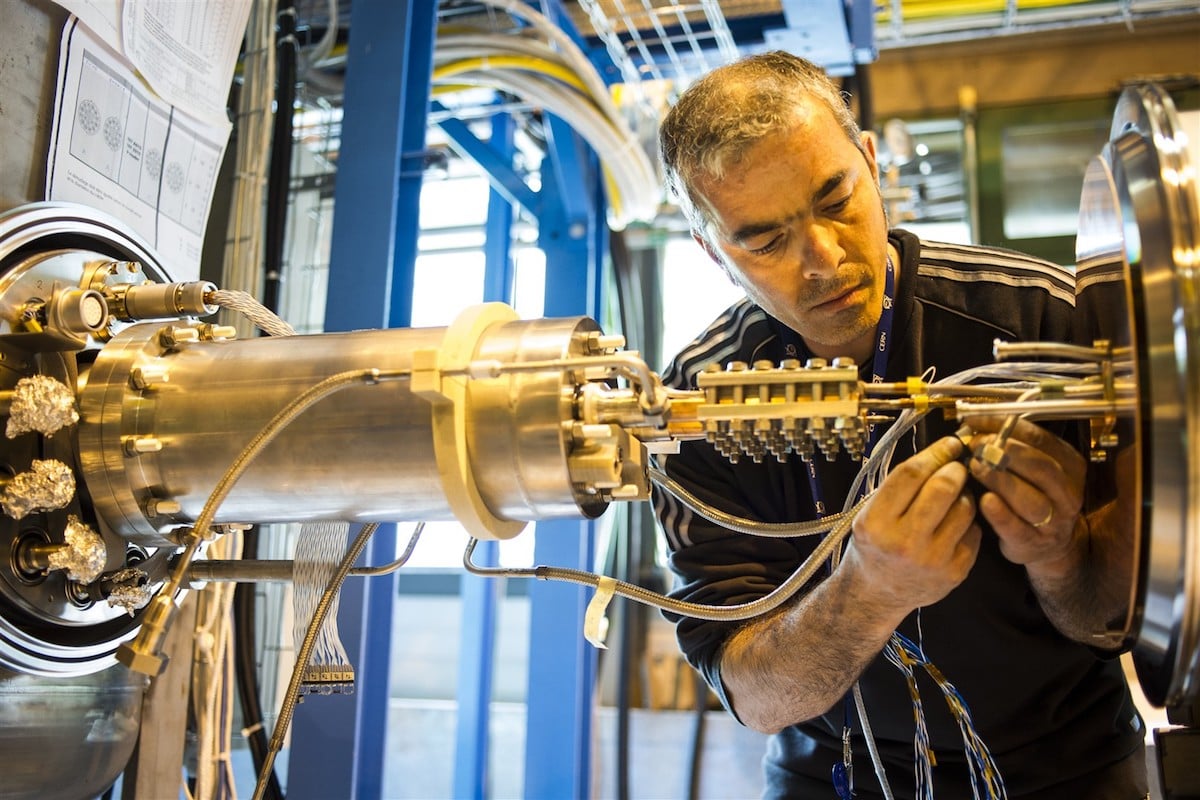
The future of physics
Towards the end of 2018, the CERN Council began preparation for an update to the European Strategy for Particle Physics – the roadmap for the entire physics community across Europe. Started in 2006 and updated in 2013, the Strategy steers the continent’s progress in physics. Fabiola will, of course, play an important role in the planning process.
“The goal is to get the new strategy approved by the CERN council in May 2020,” she says. “Of course, we’ll lay down the foundation for CERN’s and Europe’s future in particle physics. It’s an important process for the whole scientific community in the field and I am fully committed to it.”
The organisation can look back on some years of enormous success, having just completed run two of the LHC project. CERN has reported that more data than expected was recorded, thanks to the accelerator and the experiments being run with considerable efficiency.
In the wake of this success, the LHC is undergoing its second long-term shutdown in order to implement upgrades between 2019 and 2020. The LHC will re-open in 2021 for run three, before closing again between 2024 and 2026, for high-luminosity upgrades.
It’s therefore a good time for the Strategy to be updated, given the organisation stands at something of a crossroads. Fabiola is committed to all of CERN’s projects and though the LHC is certainly one of its more well-known undertakings, it’s not the only focus of the organisation. The previous iterations of the Strategy have focused heavily on the LHC and Fabiola has been dedicated to pursuing these outcomes.
She believes CERN is fundamentally a laboratory for research in particle physics at accelerators and should remain committed to expertise in the field. Going forward, she expects that the Strategy will indicate what would be a next big collider project for CERN, together with other smaller projects being part of CERN’s broader scientific program.
The new Strategy will emerge from bottom-up discussions in the physics community. The intent is to give a “voice to the grassroots”, thus making use of the collective expertise of the field. It’s a clear continuation of the values and ideals that have shaped CERN since its inception; in fact, Fabiola believes the organisation has stayed true to this path, even up to this year, its 65th.
“The founding fathers of CERN had an inspired vision that led politicians and scientists to decide in the early 1950s to establish this remarkable organisation,” she says. “I think they would be proud of the results of their initial ideas, beliefs and initiative, because CERN has, of course, flourished. The fact that we’re still here after 65 years is an example of what humanity can do when we set aside our differences and focus on the common good.”
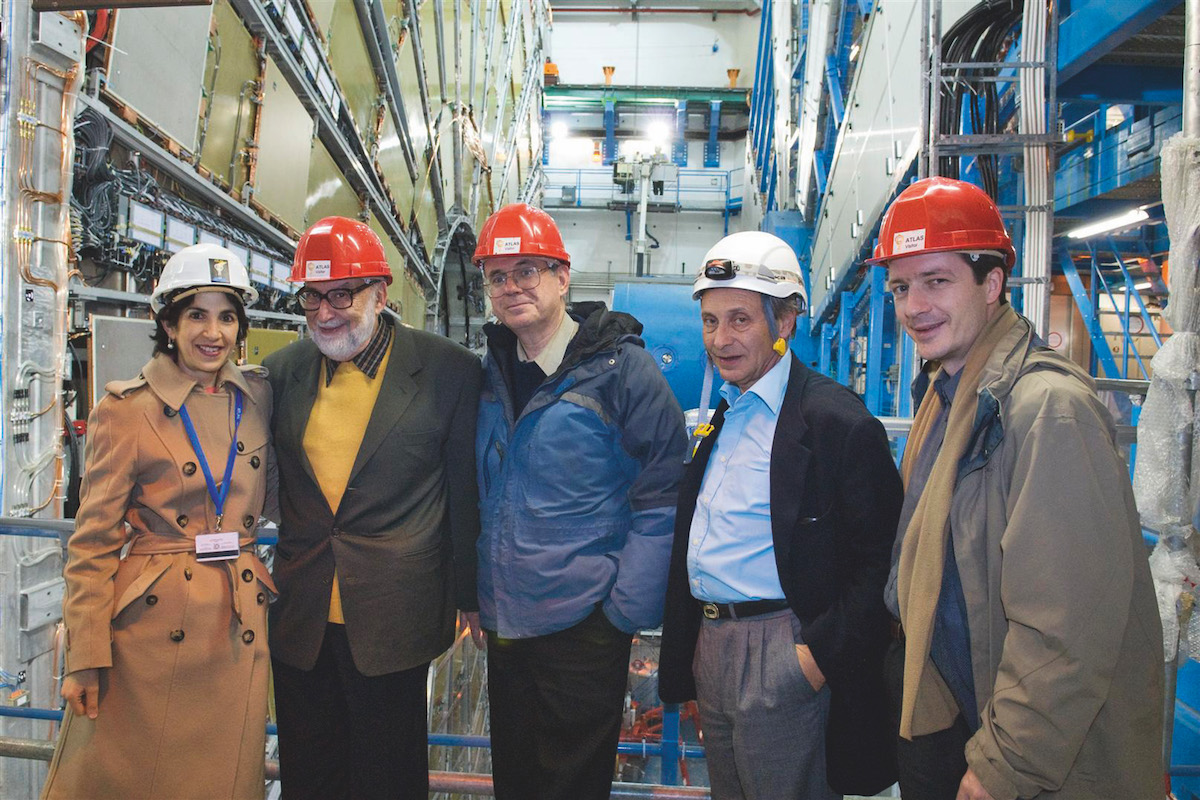
The Director-General of CERN typically serves a five-year term, contrary to most organisations, in which executives lead indefinitely. Fabiola, therefore, has a clear idea of what her term will entail and of the organisation’s direction through her tenure and beyond. It’s admirable that she’s not thinking of her duties within the scope of her own time but in how she can help guide the long-term success of the organisation.
The updated iteration of the Strategy will go into effect in 2020, right at the end of Fabiola’s current term. Her dedication to CERN’s future beyond her tenure shows how she values the organisation over her own interests. Perhaps more than this, the way Fabiola views success is evidence of her commitment to CERN.
“Success is not something exceptional,” she says. “Success means accomplishing our task and working every day, together with the colleagues and the institutions with whom CERN collaborates, to take a little step forward towards our common goal.
I have a pragmatic and humble view of success. For me, success is nothing more than doing our duty in the best possible way every day.”
CERN timeline
1954 – CERN is founded as Conseil Européen pour la Recherche Nucléaire (European Council for Nuclear Research) and though Conseil is later switched for Organisation, the acronym CERN is retained.
1957 – The Synchrocyclotron, the first of CERN’s accelerators, starts up.
1965 – Antinuclei (the antimatter form of the atom’s nucleus) are first observed.
1971 – Particles are forced to collide for the first time, pioneering technology that will eventually lead to the Large Hadron Collider.
1989 – Sir Tim Berners-Lee begins work on the project that will lead to the World Wide Web. The first ever web page and server go live the next year.
1995 – CERN first creates atoms of antihydrogen – the antimatter counterpart of hydrogen.
1996 – Fabiola joins CERN as a research physicist.
2008 – The Large Hadron Collider is completed, after 10 years of construction.
2012 – The probable existence of the long-sought Higgs boson is confirmed, explaining where molecules get mass from. Fabiola presents the results as project leader of ATLAS.
2016 – Fabiola is elected Director-General by her colleagues.


